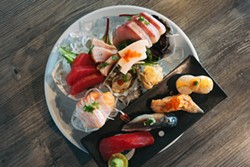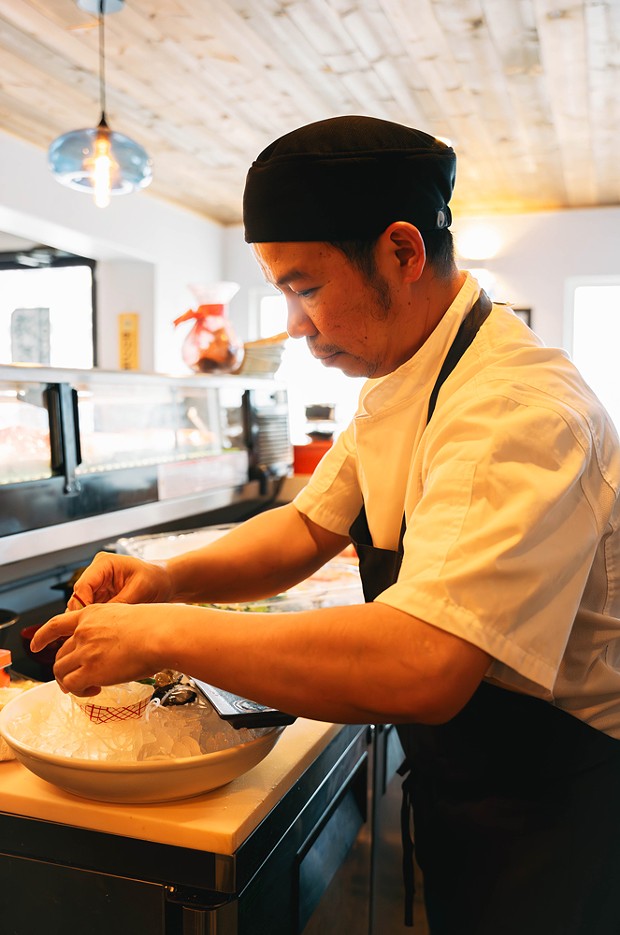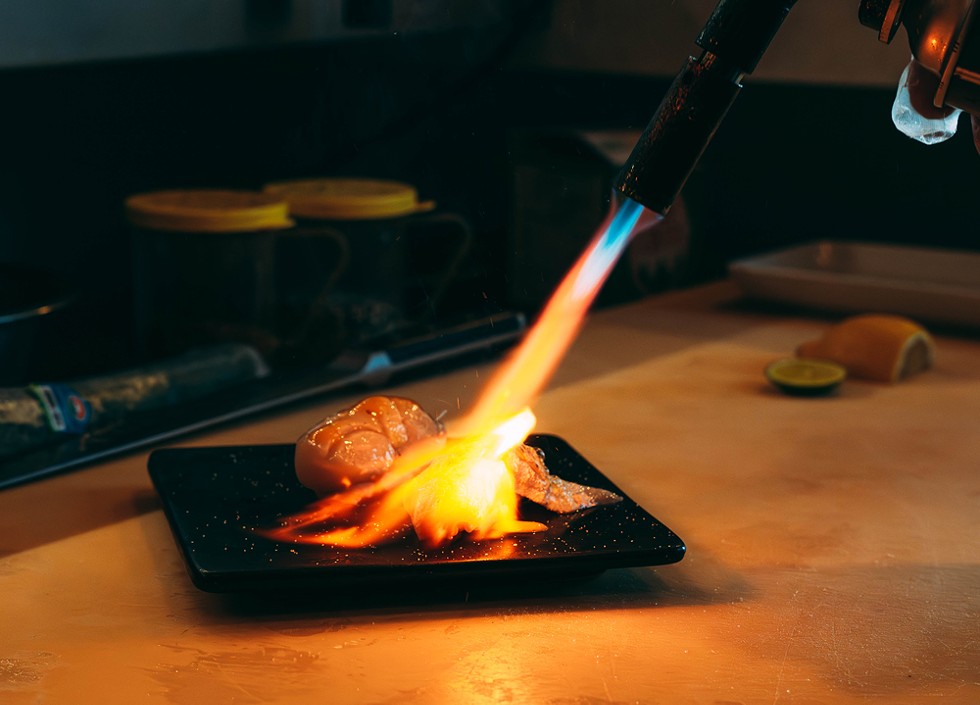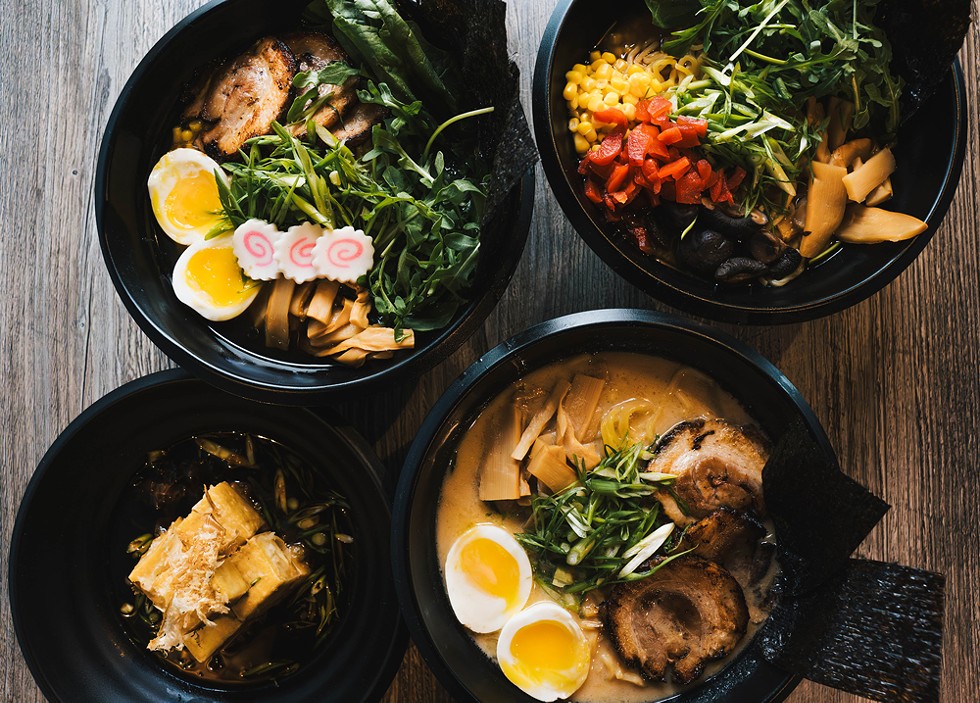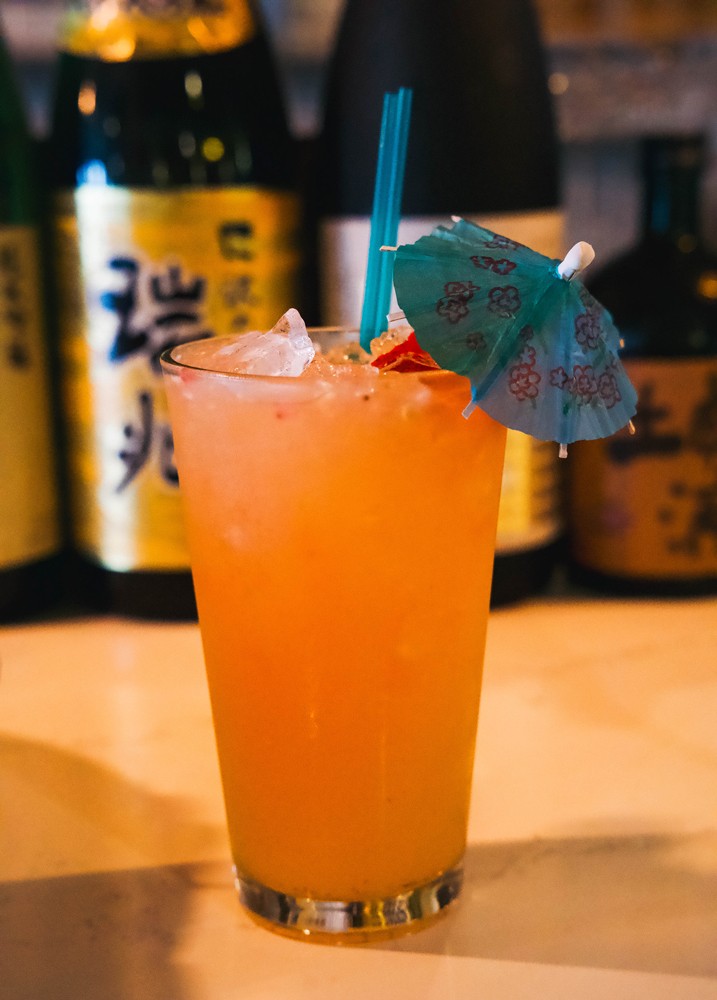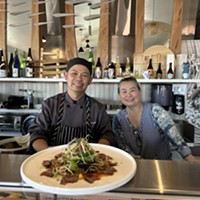CHEF JOE TAN DOES NOT WAX POETIC ABOUT SUSHI; for him, both the style and the principles are simple. "The ingredients, the quality is most important. Sushi is really basic," he says, but it demands the highest standards to be great. There may be no more minimalist cuisine than traditional sushi and sashimi, where there is no elaborate sauce or preparation to hide behind, only the pure taste of the fish itself and the skills to make its best presentation. In Japan, where sushi-grade fish is in every supermarket, he says, "Anyone can make sushi at home but [at a restaurant] it's about the quality."
Of course, Nori, where playful kaiju monster prints line the walls, still serves colorful rolls and drizzled sauces for those who crave spice and crunch. The goofily named Jessica Albacore rolls up spicy tuna, cucumber, avocado, albacore and paper-thin lemon, served with ponzu spiked with a little heat. But the nigiri and rolls that give the flavor of fresh fish the spotlight are where Nori shines.
Originally from Ipoh, a mountain town in Malaysia near Kuala Lumpur, Tan immigrated to New York City, where he worked as a sushi chef. "Then I met my wife and she told me American sushi is not the real sushi," he says laughing. He and Nami moved to Japan, where she was born. They lived in the suburb of Chiba from which Joe would commute to make sushi in the fashionable Ginza district of Tokyo and at an upscale kaitenzushi (conveyor belt sushi) restaurant inside the famed Tsukiji fish market. While his status as a foreigner kept him from moving up in the ranks, he says he learned traditional and contemporary methods, and the importance of not compromising on quality.
Without the bounty of Tsukiji Market at his feet, Tan says some ingredients, like bluefin tuna and sometimes escolar and ika (squid), can be hard to come by or more expensive. On the other hand, our local oysters, which he sources from Humboldt Bay Oyster Co., are sought after even in Japan. Even with a costly piece of fish, Tan says he tells his staff to throw away any piece they wouldn't be satisfied paying $10 for themselves. "Omakase is $25 for five pieces [of nigiri], so it has to be good ... the best of the best," he says, to keep his regulars happy and coming back.
On a recent visit, the chef offered an omakase assortment of nigiri sushi featuring deep red maguro, lightly vinegared saba (mackerel) with a pinch of green onion, a scallop barely seared and brushed with siracha mayonnaise, and a fatty salmon torched and topped with ikura (salmon roe). The sashimi combination ($40) was a jewel box of 20 pieces, including maguro, Tan's favorite hamachi (yellowtail) with a lovely ombre of pink, pale bluefin tuna, fresh salmon striped with fat, meltingly creamy escolar topped with tobiko (flying fish roe) and one plump local Kumamoto oyster dressed with ponzu.
Lately, the ramen has been gathering a following ($16). "I love ramen," says Tan, who also worked part time in ramen shops in Japan, learning to transform chicken and pork bones into opaque, collagen-rich soup over some seven hours of cooking, skimming and blending. The result is a silky, golden broth with body and deep flavor. He travels to San Francisco for fresh noodles that cook up springy and pale yellow, and hold up to the tonkotsu, shoyu and miso soups. The bowls are served with soft-boiled eggs, bamboo, and spirals of kamaboko and roasted pork belly. And they frequently sell out, so calling ahead is not a bad idea.
The vegetarian miso ramen starts with a base of kombu and shitake broth, also long simmered before adding miso paste and serving the noodles with shitake mushrooms, bamboo, greens, daikon pickles and corn. Surprisingly, the shoyu ramen uses this same broth with a soy sauce paste, so it can also be ordered vegetarian without the usual topping of pork.
Hear the shaker rattling at the other end of the bar? There's a short and sweet list of popular shochu cocktails to sample ($14). The fragrant Sweet Cucumber Martini is a refreshing callback to summer, as are the lime and fresh mint Shochu Mojito and the Strawberry Jalapeño Margarita with triple sec and Cointreau syrup.
One can't miss the army of sake bottles along the counter, the bottles and labels ranging from stately to whimsical. Nori's team of servers, who take part in annual tasting training, know their way around the sake selection and are adept at finding just the thing to suit your taste. Don't ask Tan for a favorite, though, as he can't seem to pick one from the crowd. "I like everything too much," he says with a broad smile.

